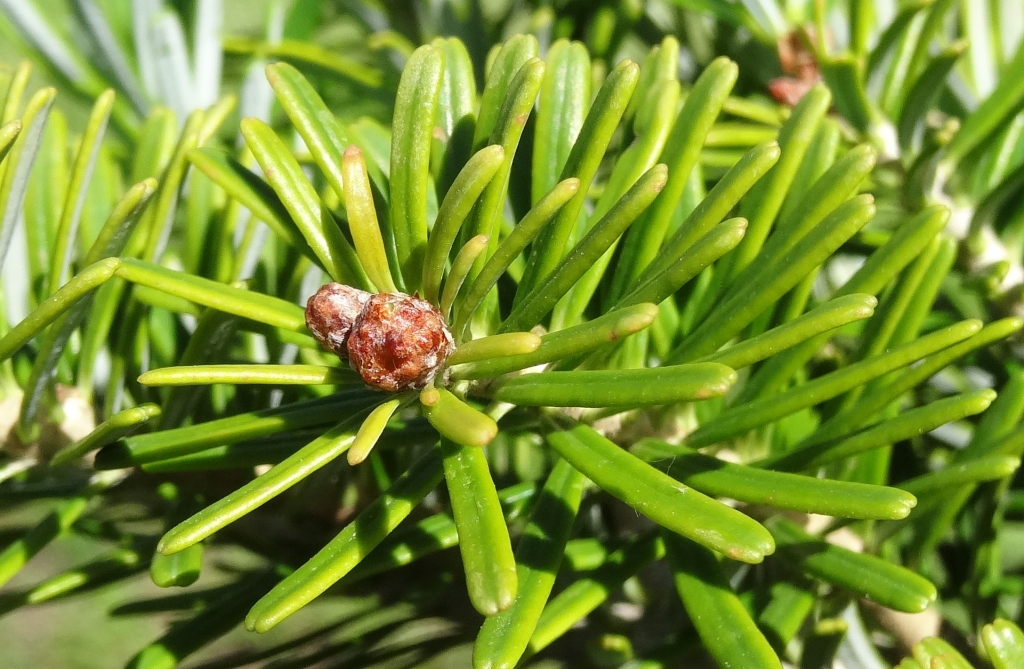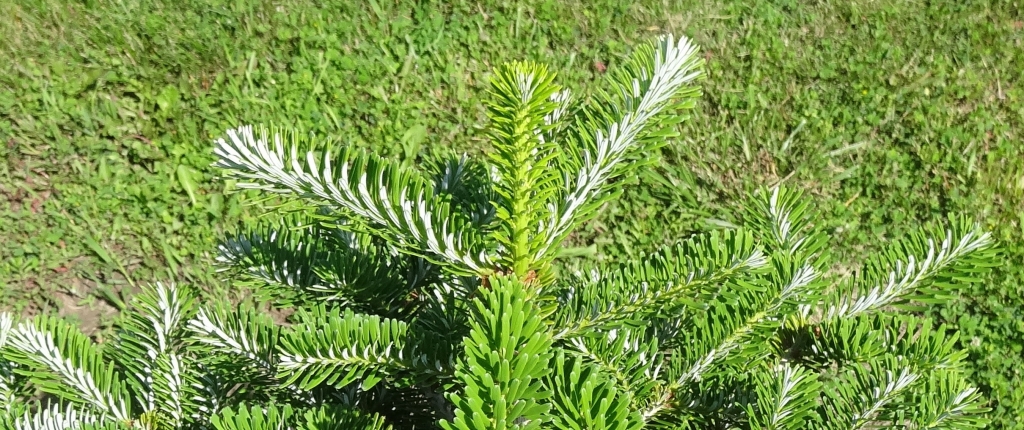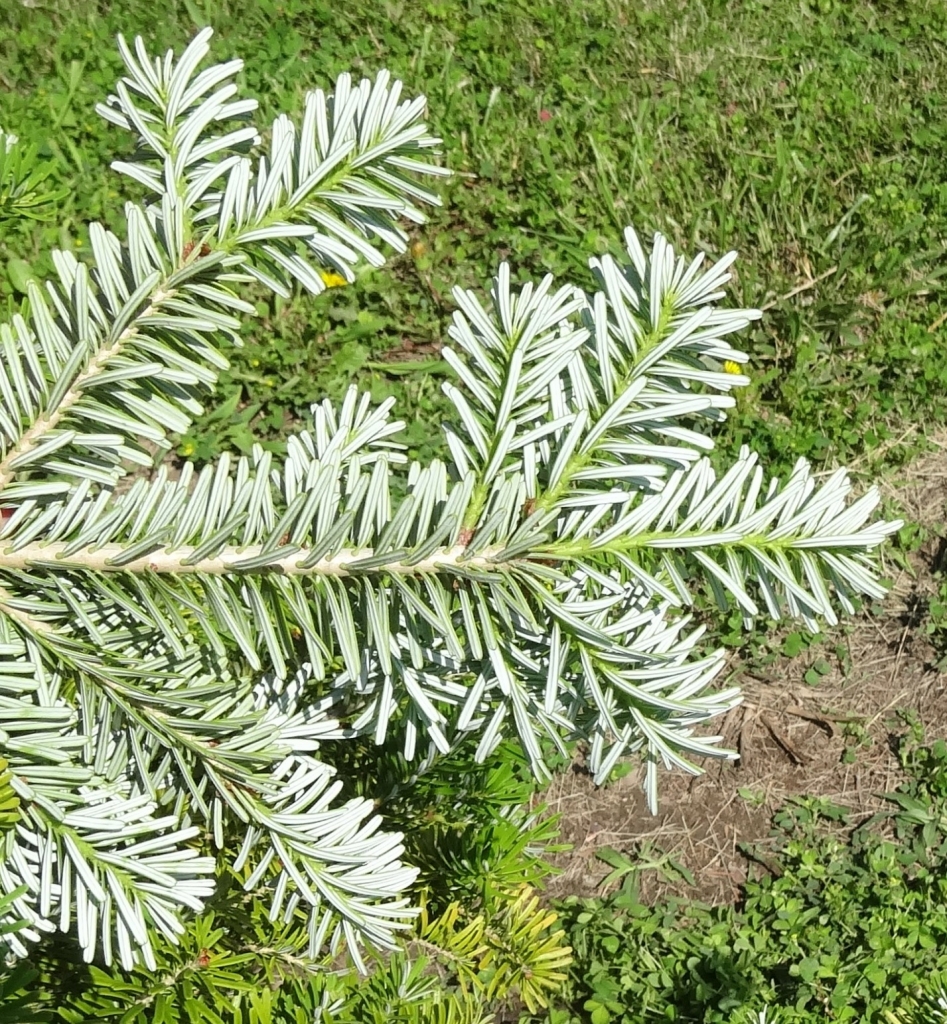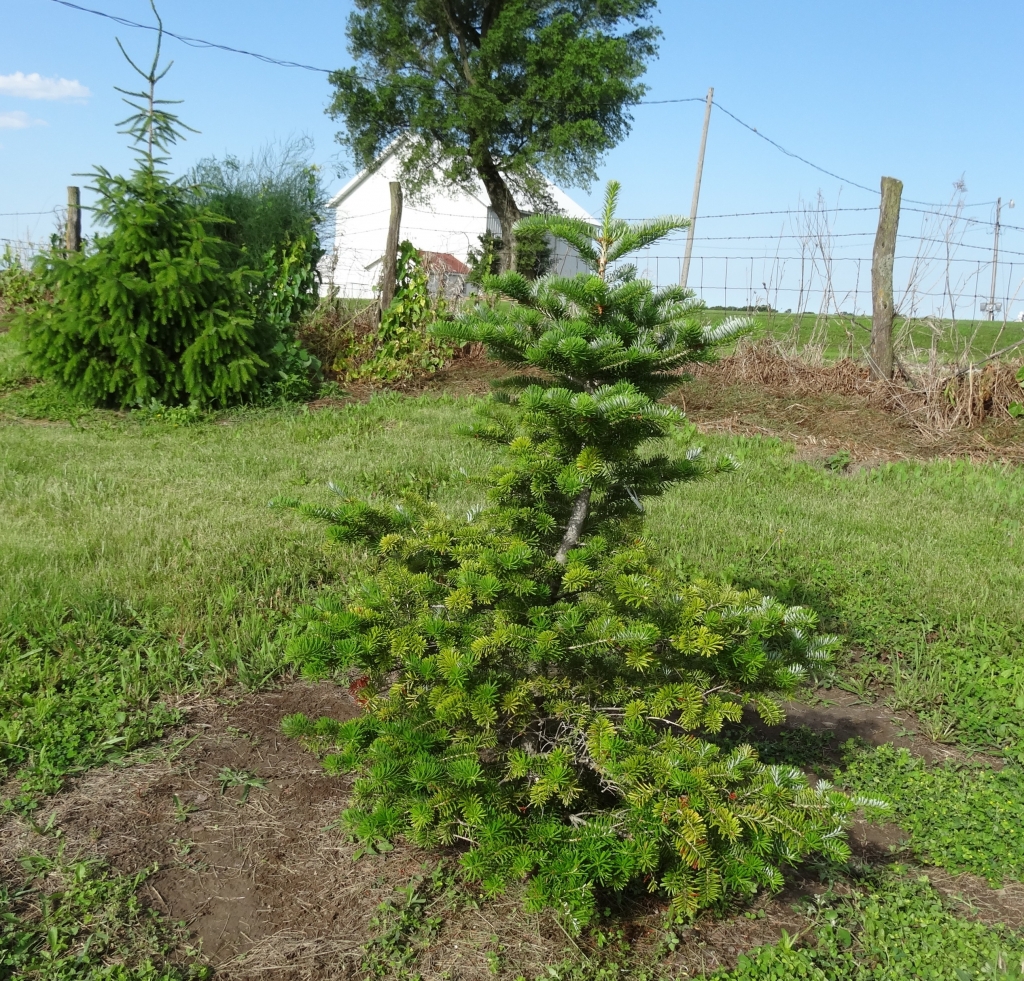Abies x arnoldiana was first described in 1969 by Tor Nitzelius (born 1914), is commonly known as Arnold fir. It is a hybrid of Korean fir (Abies koreana) and Veitch's fir (Abies veitchii).
Description. The traits inherited from the Veitch's fir are needles that are arranged in groups or bunches. The needles are up to 2 inches (20-30 mm) long with chalk-white stomatal bands. However, like the Korean fir, the width of the needles is 2-2.5 mm wide. The seed cones are cylindrical, 2-2.5 inches (5.5-6 cm) long, by 1 inch (2.5 cm) wide, held upright on the branches. The cones' colors range from violet-brown to grayish yellow-brown.
Origin. In 1953 it was grown in the Göteborg Botanical Garden, Sweden from seed obtained from the Arnold Arboretum, MA, USA. 'Graciosa' and 'Violet' were the two clones selected as the type. Similar hybrids were produced under artificially-induced conditions by D.T. Poulsen in Denmark. These were proven to possess more vigor with more intensely-colored cones that are produced earlier.



